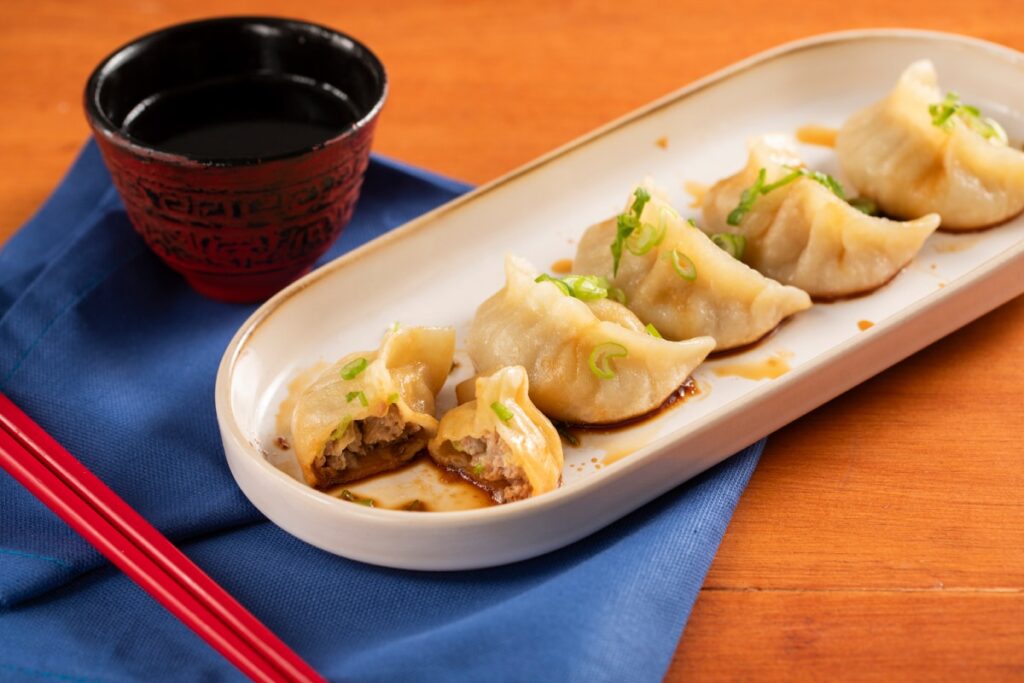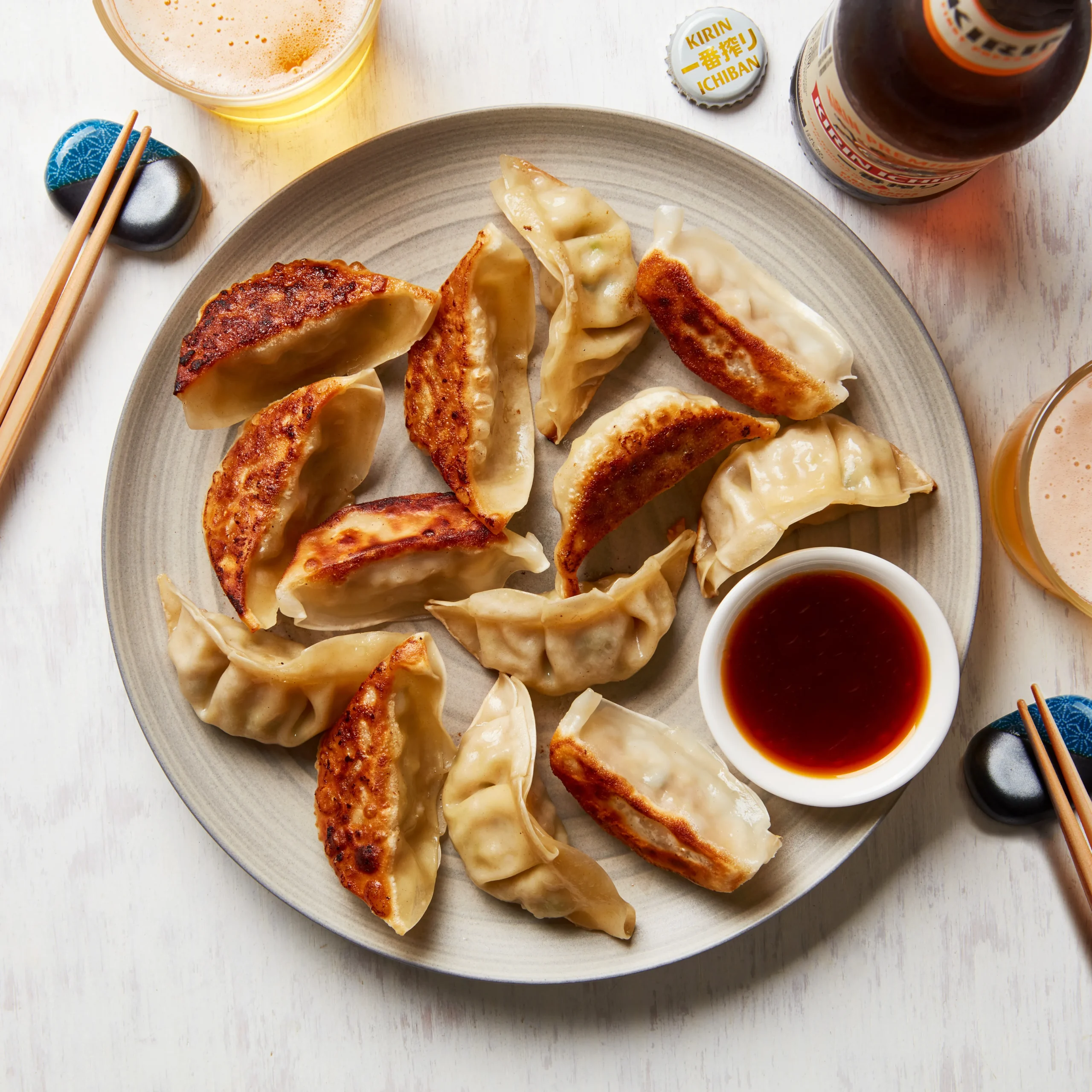Gyoza (餃子) are Japanese dumplings that have cemented their place as a national favorite. Known for their delicate, chewy wrapper, juicy filling, and—most importantly—their signature crisp, golden-brown bottom, gyoza are the perfect side dish, snack, or main course.
The Journey from China to Japan
Gyoza is the Japanese adaptation of the Chinese dumpling, jiaozi (餃子). While dumplings have ancient roots in Mesopotamia and were spread across Asia via the Silk Road, the specific form we call gyoza became popular in Japan after World War II.
During the war, Japanese soldiers and settlers stationed in Manchuria (Northern China) developed a taste for the Chinese jiaozi. Upon their return to Japan, they recreated the dish, leading to the establishment of food stalls and, eventually, the widespread popularity of gyoza across the country.
Gyoza vs. Jiaozi: The Key Differences
While rooted in the Chinese dumpling, the Japanese gyoza evolved to suit local tastes and cooking methods:
| Feature | Japanese Gyoza | Chinese Jiaozi |
| Wrapper | Thinner and more delicate. | Thicker and chewier, better for boiling. |
| Garlic | Heavily featured in the filling. | Often omitted or used sparingly. |
| Primary Method | Yaki-Gyoza (pan-fried/steam-fried) is dominant. | Shui Jiao (boiled) is the most common preparation. |
| Serving | Served as a side dish (e.g., with ramen). | Often served as a main, staple food. |

Types of Gyoza
The primary type of gyoza found in restaurants is Yaki-Gyoza, but other cooking methods exist:
- Yaki-Gyoza (Pan-Fried): The most popular. They are fried until the bottom is crispy, then steamed by adding a splash of water and covering the pan, resulting in a dual texture: a crispy bottom and a soft, steamed top. When the thin, crispy layer of starch connecting all the dumplings is left intact, it’s called hanetsuki gyoza (“gyoza with wings”).
- Sui-Gyoza (Boiled): Served in a light broth, offering a softer, more tender texture.
- Age-Gyoza (Deep-Fried): Fried until completely crispy on all sides, often found in specialty shops.
The Classic Gyoza Recipe
The filling is the heart of gyoza, traditionally a savory and aromatic mix of pork and vegetables.
Filling Ingredients:
- Ground Pork (or a mix of pork and chicken)
- Green Cabbage (finely chopped, and crucial to wring out excess moisture)
- Nira (Garlic Chives) or Green Onions
- Garlic and Ginger (minced or grated)
- Seasonings: Soy sauce, sake, sesame oil, salt, and pepper.
Cooking Yaki-Gyoza:
- Preparation: Mix the filling ingredients by hand until the mixture is sticky and well-combined. Place a small amount of filling (about 1 tbsp) into a pre-made gyoza wrapper, moisten the edges with water, and fold it into the signature pleated half-moon shape.
- The Fry: Heat a non-stick pan with a little oil over medium-high heat and arrange the gyoza flat-side down. Cook until the bottom is a beautiful golden-brown.
- The Steam: Pour about a quarter cup of water (or a water/cornstarch slurry for wings) into the pan and quickly cover it with a tight-fitting lid. The steam will cook the raw filling and the rest of the wrapper.
- The Crisp: Once the water has completely evaporated, remove the lid and allow the gyoza to fry for another minute to re-crisp the bottom.
- Serve: Transfer the gyoza, crispy-side up, and serve immediately with a dipping sauce typically made from soy sauce, rice vinegar, and rayu (chili oil).
Whether homemade or enjoyed at a cozy ramen shop, the satisfying contrast of the crispy bottom and the juicy, aromatic filling ensures that gyoza remains a quintessential Japanese comfort food.


Leave a Reply